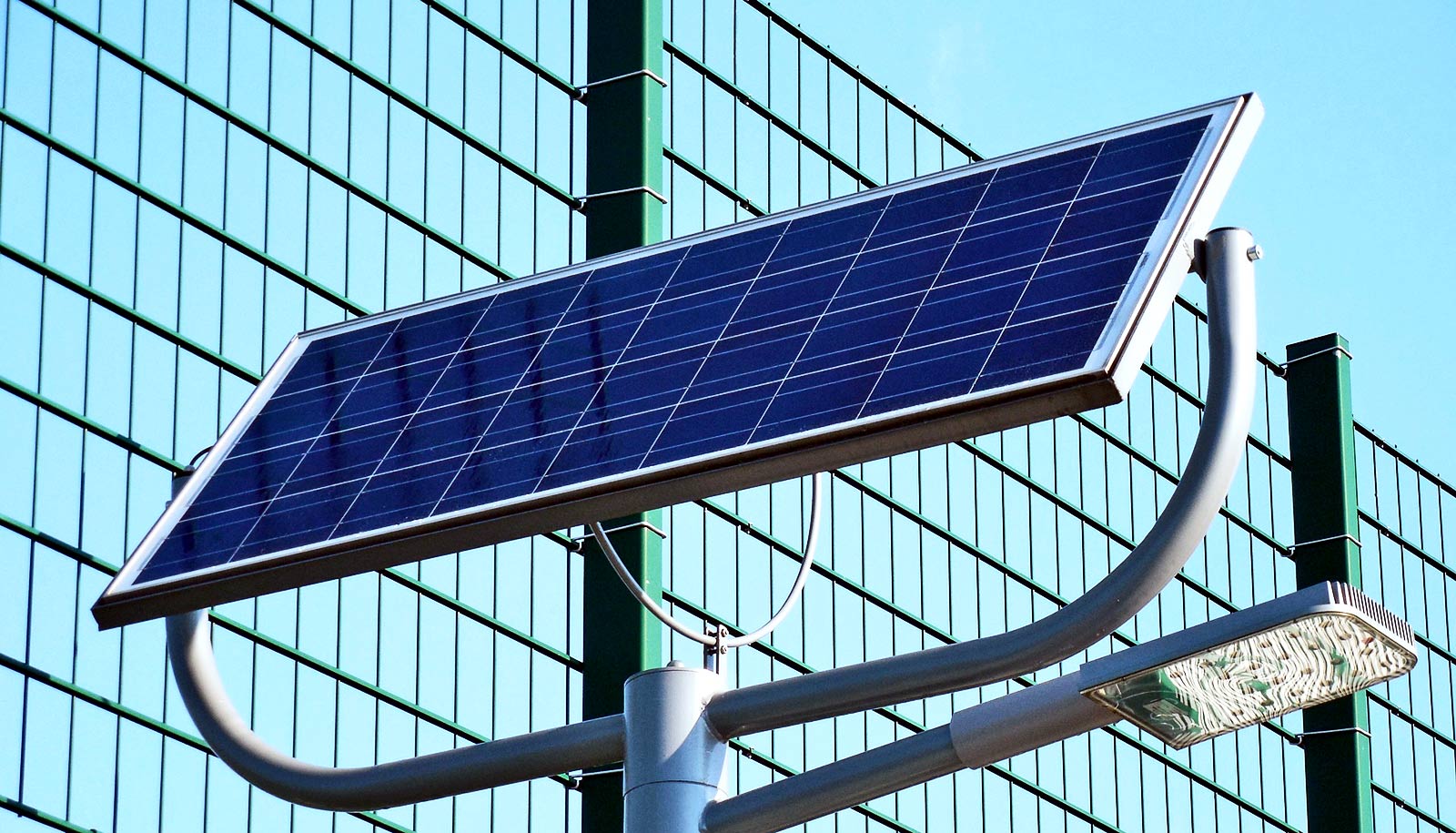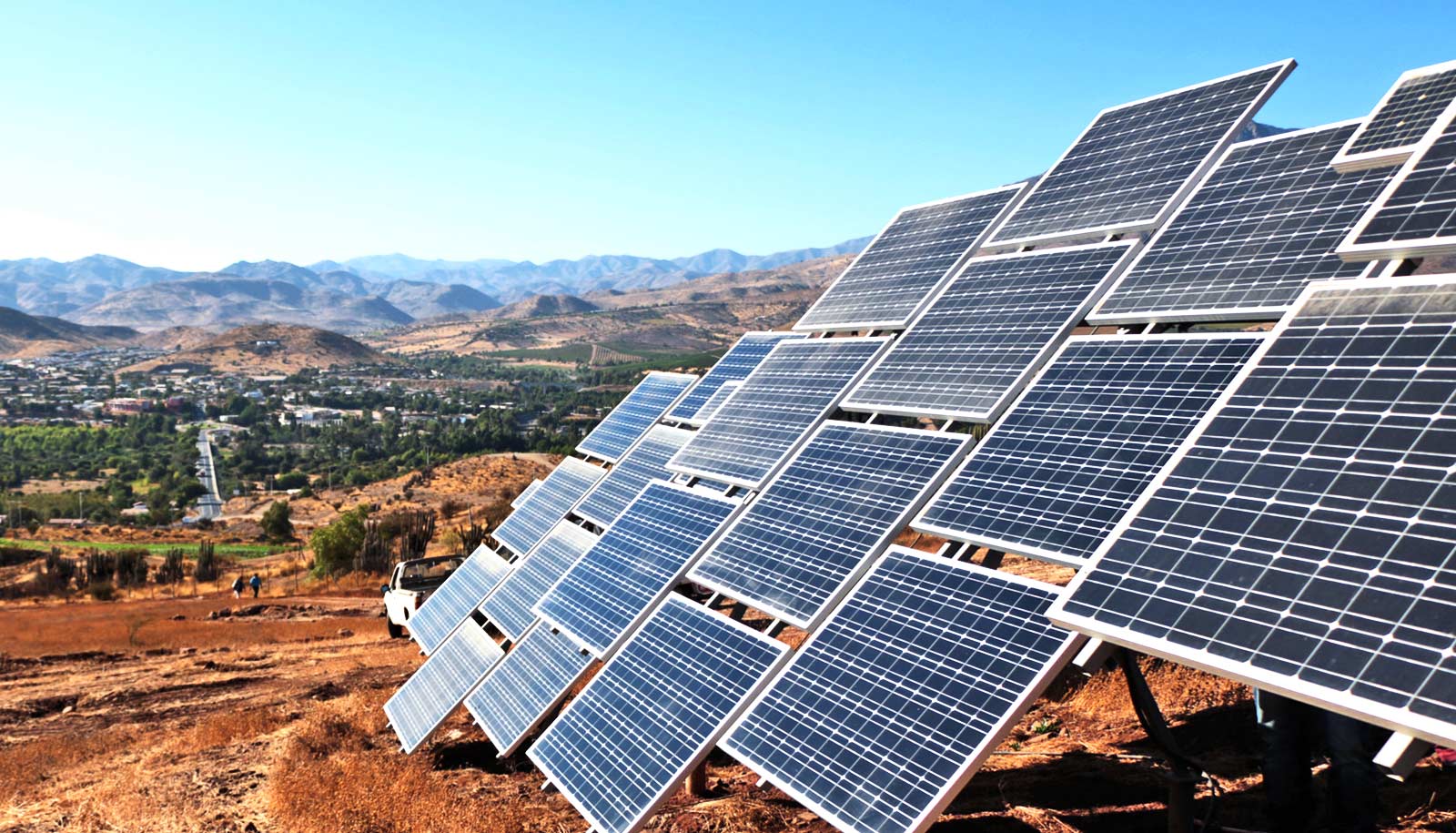The way a certain class of photovoltaic materials y converts sunlight into electricity could position them to replace traditional silicon solar cells, researchers say.
The study, which appears in Chem, reveals the unique properties of these inexpensive and quick-to-produce halide perovskites, information that will guide the development of next generation solar cells.
“Since the development of silicon solar cells, which today can be found on rooftops and roadsides, researchers have sought new types of photovoltaic materials that are easier to process into solar cells,” says senior author John Asbury, associate professor of chemistry at Penn State. “This is because construction of silicon solar cells is complex and hard to scale-up to the level that would be needed for them to generate even 10 percent of our total demand for electricity.”
Because of these complications, researchers have been searching for less expensive alternatives to silicon solar cells that can be processed more quickly. They are particularly interested in materials that a technique called roll-to-roll manufacturing can process. The technique is similar to those newspaper printers use and enables low-cost, high-volume production. Manufacturers must process these materials from solution, like ink printed on a page.
Better for their imperfections
“After forty years of intense research for such materials, nothing has come close to silicon—except an exciting class of materials known as halide perovskites,” says Asbury. “Halide perovskites seem to have a unique tolerance for imperfections in their structures that allow them to efficiently convert sunlight into electricity when other materials with similar imperfections do not.”
Prior to this study, however, scientists didn’t know what makes halide perovskites so tolerant of imperfections. The researchers used ultrafast infrared imaging technology to investigate how the structure and composition of these materials influence their ability to convert sunlight into electricity.
The researchers determined that halide perovskites have a unique ability to maintain their crystalline structure even while the atoms in their crystals undergo unusually large-scale vibrational motion.
Soft and efficient
All materials experience vibrational motion of their atoms, which making the materials’ crystals very hard—like silicon—so that their atoms are rigidly held in place typically suppresses. But, according to the current study, halide perovskites are very soft, which allows their atoms to move around and contributes to their remarkable efficiency.
“What is interesting is that such large-scale atomic motions typically lead to a loss of crystalline structure in other materials, creating imperfections that drain excited state energy,” says Asbury. “But with halide perovskites, researchers can chemically substitute electronically charged atoms in the material to tune the amplitudes of such atomic scale motions. This will allow us to improve the performance and stability of halide perovskite materials.
“Currently, halide perovskites often contain toxic elements like lead and are not yet as stable as they will need to be to replace silicon solar cells,” says Asbury. “The insights from this study will enable us to create rules for designing new halide perovskites using roll-to-roll processing. This will guide the development of next generation perovskite materials that are more stable and that contain less toxic elements such as tin instead of lead.”
The National Science Foundation funded the study.
Source: Penn State



